What do ice cream and chocolate have in common other than being delicious?
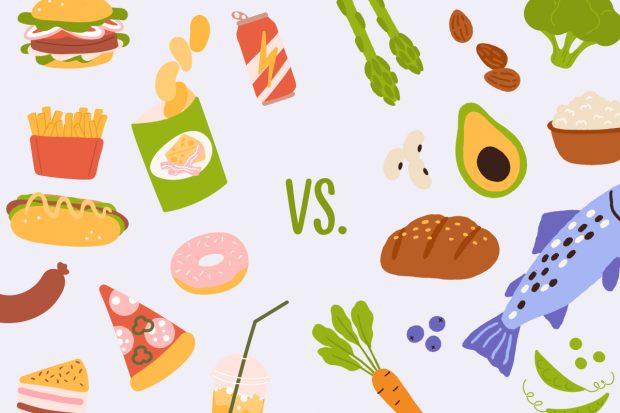
Answer: They’re considered low glycemic foods. According to many nutritionists, eating low glycemic foods are not only healthy, they’re the key to losing weight.
The glycemic index (GI) ranks foods and drinks based on the impact they have on your blood sugar levels. The higher the GI, the higher your glucose levels elevate in your bloodstream.
But what goes up must come down—an overload of glucose leads to unpredictable changes in your blood sugar levels. As a result, your body releases insulin, which is a good thing since it helps lower blood sugar levels, but it also signals your body to store fat.
You’ve probably heard the terms “good carbs” and “bad carbs.” Good carbs are said to be low GI, which means they break down slowly while stabilizing blood sugar and insulin levels. On the other hand, bad carbs are typically assigned high GI values and do the exact opposite of what good carbs do.
In theory, this seems legit, but don’t keep eating ice cream and chocolate on the reg just because they’ve been assigned low GI values. Turns out, the science behind the GI is a bit sketchy. Here’s the real truth behind the glycemic index.
Understanding Glycemic Index Values
GI values can be broken down into three ranges. Remember—low GI foods and drinks are ones that won’t raise your blood sugar levels as much as foods with medium to high GI values.
Low GI foods and drinks: 55 or less
Medium GI foods and drinks: 56 to 69
High GI foods and drinks: 70 to 100
But don’t be deceived. There are foods that we assume are healthy, yet have extremely high GI values. For example, rice milk (a processed drink with no fiber) has an extremely high GI value of 86, while brown rice (loaded with fiber) has a medium GI value of 68.
Here’s a list of common foods that have been assigned high, medium and low GI values. The results might surprise you!
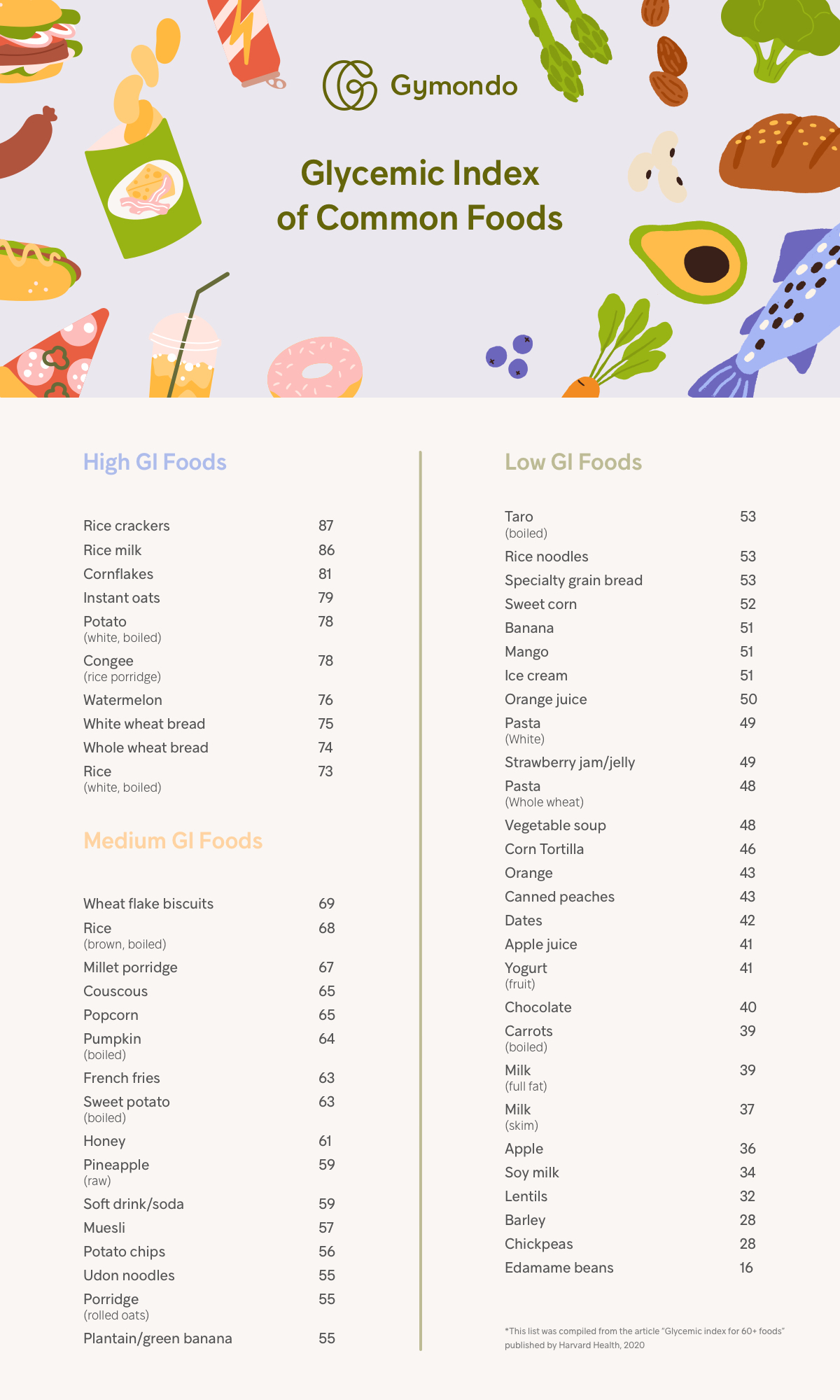
Myth #1: Low Glycemic Means Low-Carb

Broccoli has a GI of 0 and only contains 4 grams of carbs and 31 calories, yet it shares the same classification as pasta, which carries 49 grams of carbs and 221 calories per serving.
The bottom line: Just because a food or drink is low glycemic doesn’t always mean it’s low in carbs. The governing factor in determining how much food raises your blood sugar levels is the total amount of digestible carbs.
Myth # 2: Eat Only Low Glycemic Index Foods
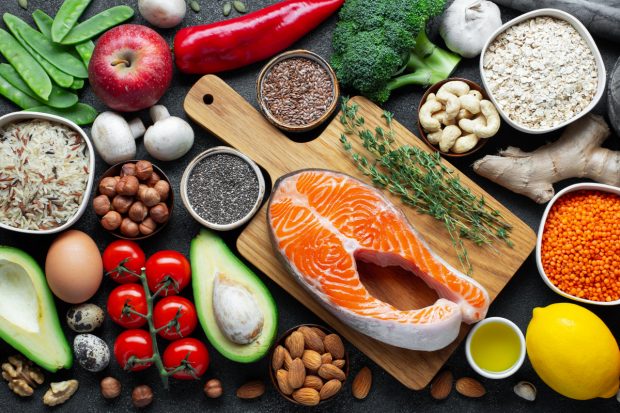
Let’s say you actually decide to do this. From now on, you’ll only choose foods with the lowest GI values.
French fries and potato chips have lower GI values than watermelon, so eat up. Ice cream has a lower GI than mango or bananas, so defo go with ice cream. And the GI value of chocolate is lower than all the foods we just mentioned, so you might as well stock up on your favorite candy bar.
Disclaimer: Just kidding on all advice given in the above paragraph!
In theory, you should opt for ice cream (and even chocolate) over a slice of watermelon. And of course, this doesn’t make sense—but the chart says so!
So what’s up with this mumbo jumbo? It’s actually quite simple—the GI doesn’t factor in portion size. These values are assigned based upon 50-gram samples of digestible carbohydrates minus the fiber. Taking this into consideration, you’d literally have to eat 5 cups of watermelon to match the same amount of carbs found in a candy bar.
The bottom line: A food or drink’s GI ranking has nothing to do with whether it’s a good choice or not. As a rule of thumb, stick to natural, whole foods like fruits and vegetables as opposed to highly processed foods, regardless of where the item falls on the GI chart.
Myth #3: Go Ahead, Overindulge in Low Glycemic Foods
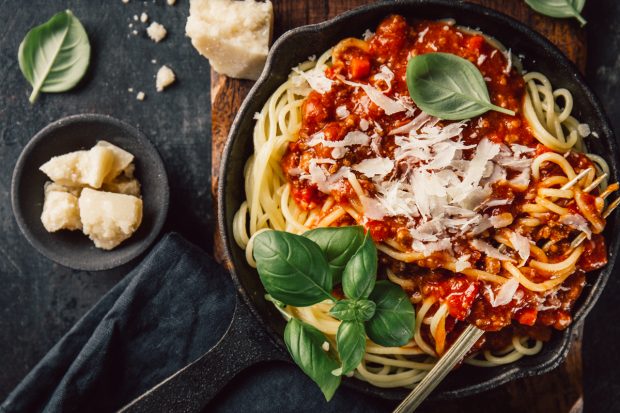
Did you know that fat actually lowers a food or drink’s GI? Crazy, right? Fat slows the absorption of glucose in your bloodstream. According to research, adding cheddar cheese to a baked potato, pasta or toast reduced the GI to a lower value.
Fiber also slows glucose absorption, so choose whole-grain over white bread every time.
The bottom line: Tossing nuts on your cereal, patting your bread with butter or adding some cheddar to your pasta will lower your blood sugar levels. Just remember—eat in moderation. Overindulgence causes extra weight gain.
Myth # 4: Low Glycemic Foods and Drinks Aren’t Junk
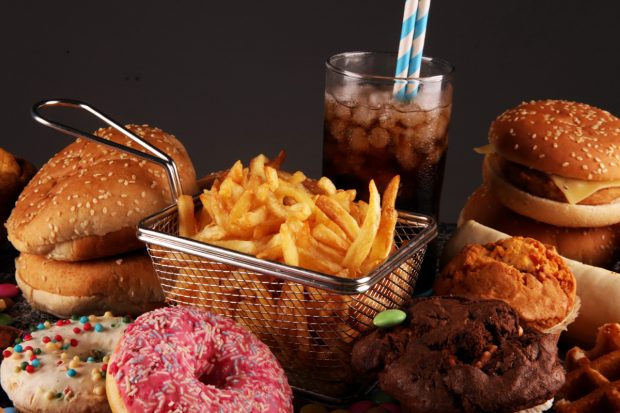
Look on the back of a 12 oz Coca-Cola bottle and you’ll find that it contains 39 grams of sugar. So how can it be assigned a lower GI value than a sweet potato?
Not all sugars are created equal. Foods and drinks high in glucose and/or starch have the greatest impact on your blood sugar. Many sweeteners—sucrose (table sugar) and high-fructose corn syrup (which is found in American Coca-Cola beverages) contain roughly 50% glucose. So only a portion of the sweetener in Coca-Cola is high glycemic.
The bottom line: Don’t be duped by low GI foods only being healthy. Some of them are pure junk. Eating foods high in sugar leads to stored fat and weight gain.
Myth #5: Take GI Values at Face Value

A recent study indicated that GI values can vary by up to 54% from person to person (not far off from fitness tracker errors). Not only this, researchers also found that GI values may vary based on your activity level. For example, after a single weight training session, the effects of a sugary sports drink on blood glucose were reduced by 15 percent, even 12 hours post-workout.
Why might this be? Glucose is stored in your muscles. After an intense workout, your body transfers glucose from your bloodstream to your muscles for repair. This reduces blood glucose levels in your bloodstream much quicker, even after a meal high in sugar content. The more you strength train, the more muscle you’ll build, giving you a larger storage area for excess glucose.
The bottom line: Exercise more, worry less (about the blood glucose levels in your body)! As a rule of thumb, only eat fast-absorbing carbs right before or following an intense workout.
Related: Why You Should Strength Train to Improve Your Long-Term Health
Takeaway
Most meals containing fast-absorbing carbs also include protein, fat and fiber. Because of this, the GI values are unreliable, since protein, fat and fiber slows the rise of your blood sugar levels.
Rather than focus on low glycemic foods, pay attention to the amount of calories you consume. If you don’t overindulge, you’ll maintain a healthy body weight.
Eat the majority of your calories from whole, natural foods like fresh fish, fruits, vegetables and whole grains. This will ensure your diet is rich in essential nutrients, vitamins and minerals.
Explore 100s of strength training workouts & 1000s of healthy recipes in the Gymondo app. Start your free trial today.




Kommentar schreiben